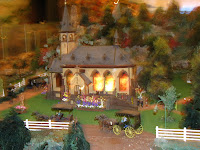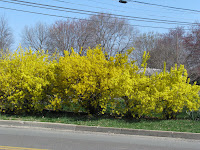Today we visited the Hershey Chocolate Factory.
They stopped factory tours in 1972 and now they have a tour in small cars that go into a mock factory, explaining the process and showing the machines in process, but we didn't actually go into the factory.
Part of it were the cows explaining the addition of milk to chocolate.
Hershey Park is closed on Mondays, so we didn't see it in action. Check out the roller coasters.
They have 11 of them.
Then we took a trolley tour of Hershey, PA.
We learned the history of Milton Hershey. He was born there, very poor. Failed at his first 3 businesses and obviously didn't fail at his chocolate business. This is where he lived, on a hill overlooking the factory. He has done a lot of things for homeless children. He has an entire school system there in Hershye for them. Really amazing person.
Then we went to visit the museum on Chocolate Ave.
Here is one of his first Hershey bars.
The street lights in the center of town are hershey kisses, both unwrapped,
and wrapped.
As we headed home on I 78 in PA, we ran into Roadside America and decided it would be a neat place to stop.
This man built this 3/8" scale "America", moving trains, trollies, waterfalls, even a plane and many other parts.
It would be well worth reading the link above. It was totally amazing. It took him 60 years to build.





















































